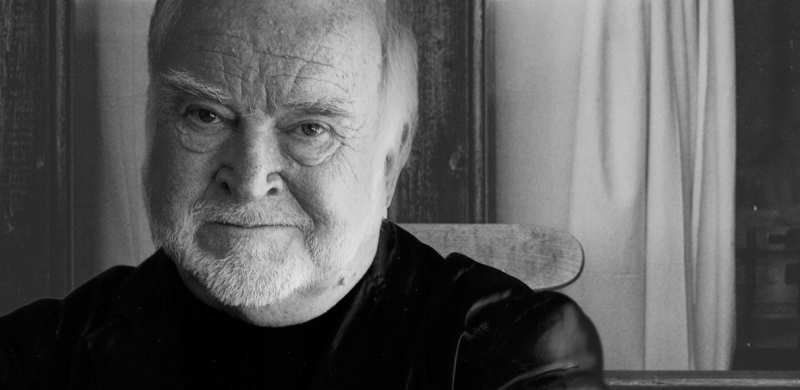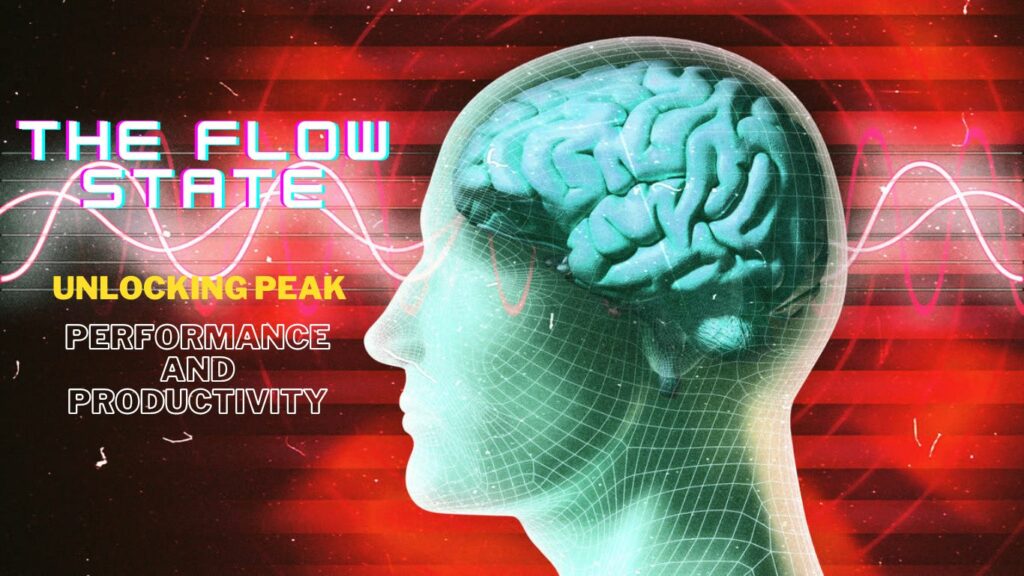Have you ever found yourself so deeply engrossed in a task that time seemed to fly by, distractions faded away, and you effortlessly performed at your best? That state of optimal experience is known as the flow state. In this article, we will explore the fascinating concept of the flow state, its benefits, and how to enter this state of heightened performance and productivity.
What is the Flow State?
The flow state, also referred to as being “in the zone,” is a mental state where individuals become fully immersed in an activity, experiencing a heightened sense of focus, enjoyment, and complete absorption. It is a state of optimal performance and productivity that has been studied extensively by psychologists and researchers.
Benefits of the Flow State
Entering the flow state offers a myriad of benefits. When in flow, you become more creative, focused, and motivated. Time seems to become irrelevant as you achieve a sense of deep fulfillment and satisfaction. Moreover, the flow state has been linked to improved learning, skill development, and overall well-being.
In this comprehensive guide, we will delve into the science and psychology behind the flow state, exploring its characteristics and components. We will discuss the neurobiological mechanisms involved and highlight the connection between the flow state and optimal performance. Additionally, we will provide practical steps and strategies to help you enter the flow state in various aspects of your life, whether it's in your personal pursuits or in the realm of work and productivity.
By understanding the flow state and implementing techniques to access it, you can unlock your full potential and experience greater fulfillment in your endeavors. Let's embark on this journey to uncover the secrets of the flow state and learn how to tap into your peak performance.
Understanding the Flow State
Definition and Significance
The flow state, first described by psychologist Mihaly Csikszentmihalyi, refers to a state of complete immersion and focus in an activity, where individuals feel fully absorbed and energized. It is characterized by a sense of effortless action, deep concentration, and a loss of self-consciousness. The flow state is often associated with peak performance and optimal experiences.

Mihaly Csikszentmihalyi
Understanding the significance of the flow state is crucial as it provides a pathway to unlocking our potential and achieving higher levels of productivity and fulfillment. By harnessing the power of the flow state, we can enhance our creativity, improve our skills, and amplify our overall well-being.
Origins and Research
Csikszentmihalyi's extensive research on the flow state has shed light on its origins and the conditions necessary for its emergence. He found that flow experiences occur when individuals face a balance between their skill level and the challenges they encounter. When the challenges are too low, individuals may feel bored, while overly difficult challenges can lead to anxiety or frustration.
Flow experiences have been observed across various domains, including sports, arts, work, and leisure activities. Researchers have explored the flow state in different populations, such as athletes, musicians, and professionals, to understand its universality and application.
Characteristics and Components
The flow state is characterized by several distinct features. These include:
- Intense focus: During flow, individuals experience a laser-like focus on the task at hand, effortlessly blocking out distractions and external stimuli. 🔍
- Timelessness: In the flow state, individuals often lose track of time. Hours may pass by in what feels like minutes, indicating a deep sense of concentration and engagement. ⏰
- Effortless action: Flow is marked by a sense of effortless performance, where actions and decisions flow naturally without conscious effort. 🌟
- Clear goals and feedback: Flow experiences typically involve clear goals and immediate feedback, providing a sense of direction and progress. 🎯🔄
- Merging of action and awareness: Individuals in flow have a sense of being completely absorbed in the present moment, with a diminished self-awareness. 🤝🧠
- Enjoyment and intrinsic motivation: Flow is inherently enjoyable, with individuals being intrinsically motivated by the activity itself, rather than external rewards. 😊💪
Connection to Optimal Performance
The flow state has a profound impact on optimal performance. When in flow, individuals can tap into their full potential, accessing heightened creativity, problem-solving abilities, and skill execution. The intense focus and deep engagement experienced in flow allow individuals to push the boundaries of their abilities, leading to improved performance outcomes.
Moreover, flow experiences have been associated with increased learning, as the state fosters a mindset of growth and exploration. By regularly entering the flow state, individuals can accelerate their skill development and continuously challenge themselves to reach higher levels of mastery.
Understanding the underlying mechanisms and components of the flow state sets the foundation for consciously entering this state of optimal experience. In the next sections, we will explore the science behind the flow state and delve deeper into the neurobiology that supports this extraordinary state of mind and performance.
The Science Behind the Flow State
Neurobiology of the Flow State
The flow state is not merely a subjective experience but has a solid neurobiological basis. Researchers have used brain imaging techniques to understand the neural mechanisms underlying the flow state. These studies have revealed fascinating insights into the brain activity during flow experiences.
Brainwaves and Neurotransmitters
Flow states are associated with specific patterns of brainwave activity. In particular, the brain tends to exhibit an increase in alpha and theta waves, which are linked to relaxed focus and heightened creativity. These brainwave patterns are distinct from the more active beta waves associated with everyday wakefulness.

Neurotransmitters also play a role in the flow state. Dopamine, a neurotransmitter associated with pleasure and reward, is released during flow experiences, contributing to the feelings of enjoyment and intrinsic motivation. Norepinephrine, another neurotransmitter involved in attention and focus, is also released, facilitating sustained concentration.
Neural Pathways and Flow State
The flow state involves the activation of specific neural pathways. One key pathway is the prefrontal cortex, responsible for higher cognitive functions such as decision-making and goal-setting. During flow, this region shows reduced activity, indicating a state of effortless action and reduced self-consciousness.
The flow state is also associated with the deactivation of the dorsolateral prefrontal cortex, which is responsible for self-monitoring and self-judgment. This deactivation allows individuals to enter a state of non-self-awareness, enabling them to fully immerse themselves in the activity without distractions or inhibitions.
Additionally, the brain's reward system, including the release of dopamine, is closely involved in flow experiences. When individuals achieve a balance between their skills and the challenges they face, the brain's reward circuitry is activated, reinforcing the flow state and motivating further engagement in the activity.
Flow State and Creativity
Flow experiences have a significant impact on creativity. When in flow, individuals often experience heightened creative insights and problem-solving abilities. This can be attributed to the unique combination of relaxed focus, reduced self-awareness, and the release of dopamine, which enhances cognitive flexibility and the generation of novel ideas.
Furthermore, the flow state promotes a state of “deep work,” where individuals can engage in sustained, uninterrupted periods of focused work. This uninterrupted focus allows for a deep exploration of ideas, leading to enhanced creativity and innovative thinking.
Scientific Studies on the Flow State
Numerous scientific studies have explored the flow state and its implications. Researchers have examined flow experiences in various contexts, such as athletes, musicians, and professionals, to understand the underlying mechanisms and conditions that facilitate the flow state.

For example, studies have shown that athletes often enter the flow state during peak performance moments, where they achieve extraordinary feats with apparent ease. Musicians experience flow when fully absorbed in their music, effortlessly playing complex pieces. Professionals can also experience flow at work, leading to increased productivity and job satisfaction.
By studying the flow state scientifically, researchers continue to unravel the intricate workings of this extraordinary mental state. The understanding of the neurobiology behind flow experiences paves the way for practical strategies and techniques to deliberately enter the flow state and reap its benefits. In the following sections, we will explore how you can identify flow-inducing activities and learn to enter the flow state in your own life.
Steps to Enter the Flow State

Step 1: Preparation and Creating the Right Environment
Creating the right environment is essential for entering the flow state. Minimize distractions by finding a quiet and comfortable space where you can fully immerse yourself in the activity. Clear your physical and digital surroundings of any potential disruptions. Consider setting up a dedicated workspace or practice area that is conducive to flow.
Step 2: Setting Clear Goals and Objectives
Having clear goals and objectives is crucial for entering the flow state. Clearly define what you want to accomplish and break it down into specific tasks or milestones. This provides a sense of direction and focus, allowing you to channel your energy and attention more effectively.
Step 3: Maintaining Focus and Concentration
Flow requires sustained focus and concentration. Eliminate distractions by turning off notifications, closing irrelevant tabs or apps, and setting aside dedicated time for the activity. Practice mindfulness techniques such as deep breathing or meditation to enhance your ability to stay present and fully engaged in the task at hand.
Step 4: Cultivating Intrinsic Motivation and Enjoyment
Intrinsic motivation and enjoyment are key drivers of the flow state. Engage in activities that genuinely interest and excite you. Find the intrinsic value and pleasure in the process itself, rather than focusing solely on external rewards or outcomes. Tap into your passions and align your activities with your personal interests.
Step 5: Embracing Challenges and Managing Skill Level
Flow occurs when there is an optimal balance between the challenge level of the task and your skill level. Seek out activities that provide a meaningful challenge but are still within your capabilities. Gradually push yourself to expand your skills and take on progressively more challenging tasks to maintain the flow state.
Step 6: Practicing Mindfulness and Self-Awareness
Developing mindfulness and self-awareness can greatly enhance your ability to enter and sustain the flow state. Pay attention to your thoughts, emotions, and physical sensations while engaging in the activity. Notice any tendencies to self-criticize or become distracted, and gently redirect your focus back to the present moment.
Step 7: Strategies to Overcome Potential Obstacles
Flow can sometimes be disrupted by various obstacles. Some common challenges include self-doubt, fear of failure, and external distractions. Develop strategies to overcome these obstacles. Practice positive self-talk, visualization, and relaxation techniques to manage anxiety. Implement time management techniques, such as the Pomodoro Technique, to create focused, uninterrupted blocks of time.
Remember that entering the flow state is a skill that can be developed with practice. It may take time and experimentation to find the right activities and conditions that consistently trigger flow for you. Embrace the journey and be patient with yourself as you cultivate your ability to enter the flow state.
By following these steps and incorporating flow-inducing practices into your daily life, you can increase your likelihood of entering the flow state and experiencing heightened performance, creativity, and enjoyment. The next sections of this article will explore the transformative potential of the flow state in personal growth and its implications for work and productivity.
The Transformative Power of the Flow State
1. Personal Growth and Self-Actualization
The flow state has the potential to foster personal growth and self-actualization. By regularly entering the flow state, you can push beyond your comfort zone, challenge yourself, and continually develop new skills and capabilities. The state of flow encourages a mindset of growth and exploration, enabling you to reach higher levels of mastery and fulfillment in your personal pursuits.
2. Enhanced Creativity and Innovation
The flow state is strongly associated with enhanced creativity and innovative thinking. When in flow, you tap into a heightened state of imagination and problem-solving abilities. The relaxed focus and freedom from self-consciousness allow for the emergence of novel ideas and unique perspectives. By accessing the flow state, you can unlock your creative potential and approach challenges with fresh insights.
3. Increased Productivity and Efficiency

Entering the flow state can significantly boost productivity and efficiency. When fully immersed in a task, distractions fade away, and you become fully absorbed in the present moment. This heightened focus enables you to work with greater efficiency and effectiveness, accomplishing more in less time. Flow experiences promote a state of deep work, where you can engage in concentrated, uninterrupted periods of high-quality output.
4. Optimal Performance and Achievement
The flow state is synonymous with optimal performance. When in flow, you operate at the peak of your abilities, executing tasks with precision and excellence. Flow experiences are often characterized by a sense of effortlessness, as actions flow naturally and intuitively. By regularly accessing the flow state, you can elevate your performance levels, achieve outstanding results, and surpass your previous limitations.
5. Joy, Fulfillment, and Well-being
The flow state is deeply rewarding and brings a profound sense of joy, fulfillment, and well-being. When fully immersed in a flow experience, you derive intrinsic satisfaction from the activity itself, transcending external rewards. The state of flow offers a respite from stress, worries, and self-doubt, allowing you to experience a profound sense of contentment and happiness.
6. Balance and Harmony in Life
The flow state has the potential to create a sense of balance and harmony in life. By intentionally seeking out flow-inducing activities, you can create a more harmonious integration of work, leisure, and personal pursuits. Flow experiences provide a break from the pressures and demands of daily life, allowing you to reconnect with your passions and find a greater sense of fulfillment in all areas of your life.
Frequently Asked Questions about the Flow State
1. What are some common signs that indicate being in the flow state?
- Intense focus and concentration on the task at hand.
- A sense of timelessness, where hours seem to pass by quickly.
- Effortless and fluid performance, as if actions come naturally.
- Immersion in the present moment, with a diminished sense of self-awareness.
- A feeling of joy, satisfaction, and intrinsic motivation.
- Clear goals and immediate feedback.
2. Can anyone enter the flow state, or is it reserved for highly skilled individuals?
The flow state is accessible to individuals of varying skill levels. While flow experiences are often associated with experts or individuals with advanced skills, anyone can enter the flow state. The key lies in finding activities that provide an optimal balance between the challenges you face and your skill level. With practice and deliberate focus, individuals can cultivate the ability to enter the flow state in their chosen endeavors.
3. How can I find activities that are more likely to induce the flow state for me?
To identify activities that are more likely to induce the flow state, consider the following factors:
- Personal interests: Engage in activities that align with your passions and areas of genuine interest.
- Skill-challenge balance: Seek activities that offer an appropriate level of challenge, where you can leverage your existing skills while pushing your boundaries.
- Enjoyment and intrinsic motivation: Choose activities that bring you joy and a sense of fulfillment intrinsically, rather than solely focusing on external rewards.
- Immersion and absorption: Look for activities that allow you to become fully absorbed, losing track of time and distractions.
- Previous flow experiences: Reflect on past instances when you experienced the flow state and explore similar activities that may recreate that state.
4. Can the flow state be experienced in different domains, such as work, sports, or artistic pursuits?
Absolutely! The flow state can be experienced in various domains, including work, sports, arts, hobbies, and everyday activities. Whether you're immersed in a challenging project at work, engaged in a competitive sport, or lost in the creative process of painting or writing, the flow state can enhance your performance and enjoyment in those domains.
5. How can I overcome self-doubt or fear of failure when trying to enter the flow state?
Self-doubt and fear of failure can hinder the flow state. To overcome these obstacles, consider the following strategies:
- Practice self-compassion and positive self-talk.
- Set realistic expectations and focus on the process rather than the outcome.
- Embrace a growth mindset, viewing failures as opportunities for learning and growth.
- Break down tasks into smaller, manageable steps to build confidence.
- Visualize success and cultivate a sense of self-belief.
6. Can the flow state be sustained for extended periods of time?
While flow experiences are often described as transient, it is possible to sustain the flow state for extended periods with the right conditions and mindset. By deliberately designing your environment, managing distractions, setting clear goals, and engaging in activities that provide an ongoing balance between challenge and skill, you can prolong and deepen your flow experiences.
7. Is it possible to enter the flow state in a group or collaborative setting?
Yes, the flow state can be experienced in a group or collaborative setting. When individuals in a group share a common goal, possess complementary skills, and have a high degree of trust and synergy, they can collectively enter a state of group flow. In group flow, the dynamics and energy of the group facilitate heightened performance, cooperation, and shared flow experiences.
8. Can the flow state be learned and developed over time?
Yes, the ability to enter the flow state can be learned and developed over time with practice and deliberate effort. By applying the strategies and techniques outlined in this article, honing your self-awareness, and actively seeking flow-inducing activities, you can cultivate the skill of entering the flow state more consistently and enjoy its transformative benefits.
9. Are there any risks or potential drawbacks associated with the flow state?
While the flow state is generally a positive and rewarding experience, it's important to maintain a balanced approach. Excessive focus on flow experiences to the detriment of other important aspects of life, such as relationships or self-care, can lead to imbalance or burnout. It's crucial to find a healthy integration of flow experiences with other areas of life, ensuring a well-rounded and sustainable approach.
10. How can I incorporate the principles of flow into my daily life?
To incorporate the principles of flow into your daily life:
- Identify flow-inducing activities and schedule dedicated time for them.
- Set clear goals and create a conducive environment for focus.
- Practice mindfulness and self-awareness in your activities.
- Seek challenges that push your skills and provide growth opportunities.
- Prioritize enjoyment and intrinsic motivation in your pursuits.
- Regularly reflect on your experiences and adjust your approach as needed.
By consciously integrating flow principles into your daily routines and activities, you can unlock the transformative potential of the flow state and lead a more fulfilling and meaningful life.



